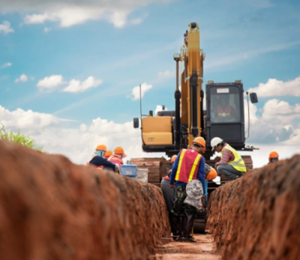Consumers Energy proposes new buried power line program to strengthen Michigan grid
(UI) – Consumers Energy is proposing a targeted undergrounding pilot program pending approval from the Michigan Public Service Commission. The program is meant to help the company better understand how to bury power lines in a cost-effective way to strengthen Michigan's electric grid and reduce outages.

The pilot will study real-world resiliency improvements that result from burying power lines, and how those improvements compare with other approaches to improving electric service for nearly 2 million Michigan homes and businesses.
Buried power lines are protected from common outage causes, including lightning, high winds, tornadoes, heavy snow, ice and falling tree limbs. Buried lines also reduce or eliminate downed wire electrocutions, fire hazards, vehicle collisions, and falling poles, improving public safety.
Based on results from other states and energy providers that have moved overhead lines underground, Consumers Energy estimates it can improve resiliency 90 percent along circuits where lines are buried.
"We know burying power lines will help make the grid stronger, especially during violent storms that are hitting Michigan more frequently," said Greg Salisbury, Consumers Energy's Vice President of Electric Distribution Engineering. "Historically, the costs to bury lines have been too expensive, but we have driven down the cost per mile to be equivalent to above-ground hardening costs. This pilot will help us learn even more about how to bury lines in ways that keep costs as low as possible, allowing us to bury additional lines in the future."
The pilot program will target circuits in Genesee, Livingston, Allegan, Ottawa, Montcalm, and Iosco counties that have frequent, lengthy outages and are in areas with dense trees, which are often responsible for the outages.
In the future, Consumers Energy aims to underground about 400 miles of line annually. Today, about 15% of Consumers Energy lines are underground, and most are located in subdivisions and areas with high population density.
Related News
From Archive

- Glenfarne Alaska LNG targets late-2026 construction start for 807-mile pipeline project
- U.S. water reuse boom to fuel $47 billion in infrastructure spending through 2035
- $2.3 billion approved to construct 236-mile Texas-to-Gulf gas pipeline
- Major water pipe break in Puerto Rico hits over 165,000 customers
- Potomac River Tunnel project enters construction phase beneath Washington, D.C.
- Pennsylvania American Water launches interactive map to identify, replace lead water service lines
- Trump's tariffs drive $33 million cost increase for Cincinnati sewer project
- Utah city launches historic $70 million tunnel project using box jacking under active rail line
- Tulsa residents warned after sewer lines damaged by boring work
- Fatal trench collapse halts sewer construction in Massachusetts; two workers hospitalized



Comments